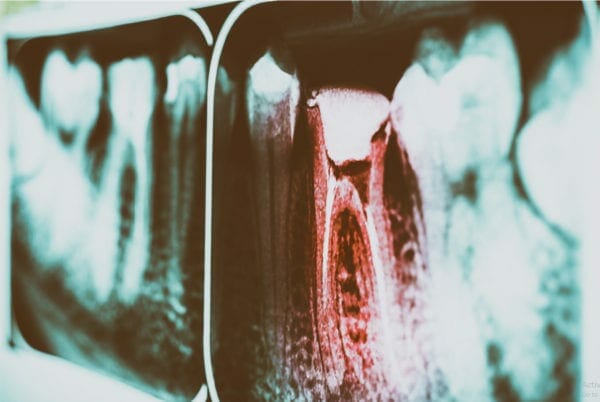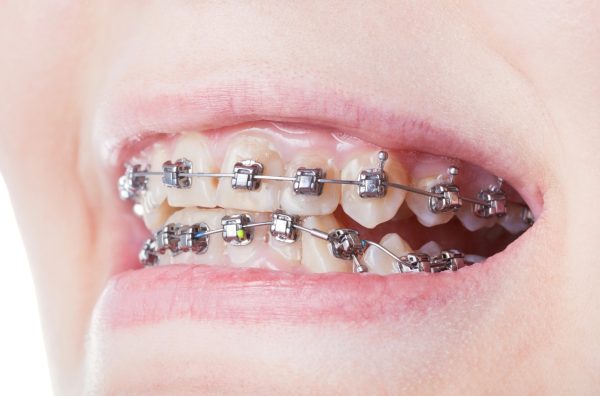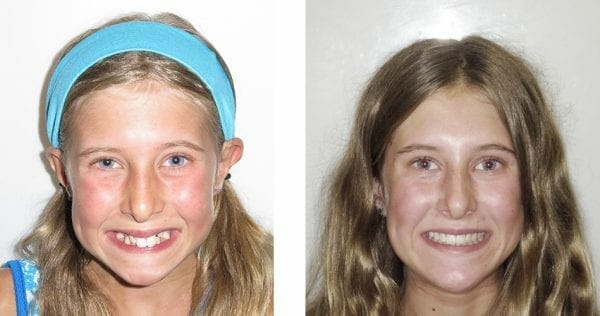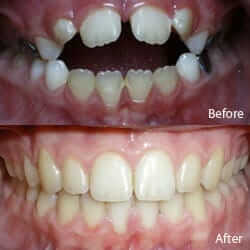Causes, Detection, and Management of Root Resorption
By Dr. Ryan Redford & Dr. Michael Burke – Burke & Redford Orthodontists, Temecula & Lake Elsinore, California
Why Parents Should Understand Root Resorption
Most families visit an orthodontist to straighten teeth and improve a child’s bite. Few arrive knowing anything about root resorption, yet it is an important concept for long-term dental health. In simplest terms, root resorption is the shortening or loss of tooth-root structure. A small amount is considered normal during orthodontic therapy; excessive loss, however, can threaten the stability of a tooth.
At Burke & Redford Orthodontists, we believe informed parents make the best decisions. This article explains:
- What root resorption is and why it sometimes accompanies orthodontic treatment.
- Risk factors that increase the likelihood of root shortening.
- Modern diagnostic tools—including 3-D CBCT imaging—used to detect early resorption.
- We employ management treatment to protect your child’s teeth while still achieving a beautiful, functional smile.
Throughout, we will highlight how our practice integrates advanced technology using self-ligating braces, Invisalign® Teen, miniscrews, and CBCT to minimize risk and deliver predictable results.

Defining Root Resorption
Every tooth sits inside its own bony socket, cushioned by a microscopic “sling” called the periodontal ligament (PDL). During orthodontic movement, gentle forces compress one side of the PDL (pressure) and stretch the other (tension). On the pressure side, bone dissolves so the tooth can slide forward. On the tension side, new bone forms to support the tooth in its new location.
Root resorption occurs when the body accidentally removes dentin (root structure) instead of—or in addition to—alveolar bone. The process is carried out by specialized cells called odontoclasts.
Two broad categories exist:
| Type | Typical Cause | Key Features |
| External Apical Root Resorption (EARR) | Orthodontic forces, trauma, cysts | Begins at the root tip and moves upward |
| Cervical (Inflammatory) Resorption | Trauma, internal bleaching, infection | Starts near cervical region; rarer in orthodontics |
EARR is the form most often discussed in orthodontic literature and the focus of this article.
Why Does Root Resorption Occur During Orthodontics?
Multiple factors combine to trigger EARR:
- Magnitude and Duration of Force
- Heavy, continuous forces recruit more odontoclasts.
- Research shows light, controlled forces (50-100 grams) produce less resorption.
- Treatment Time
- The longer a tooth remains under active force, the greater the cumulative risk.
- Efficient appliances and good treatment plans reduce total force-days.
- Tooth Anatomy
- Teeth with pipette-shaped roots are more susceptible.
- Genetic predisposition also plays a role; some patients are “high responders.”
- Previous Trauma or Infection
- A tooth that experienced prior injury (luxation, intrusive trauma) can resorb more quickly under orthodontic load.
- Ethnicity
- Asian patients show less incidence of resorption than Caucasians and Hispanics.

Incidence and Clinical Relevance
- Mild resorption (≤2 mm) occurs in roughly 90 % of patients and rarely affects tooth longevity.
- Moderate resorption (2–4 mm) appears in about 15 % of cases. Long-term prognosis is usually good, but the tooth should be monitored.
- Severe resorption (>4 mm or >1/3 root length) is found in <5 % of patients and demands careful management, sometimes including pausing or terminating active movement.
Fortunately, with modern detection tools and gentler biomechanics, severe cases are far less common than they were a generation ago.
How We Detect Root Resorption Early
Baseline Records
Before any brackets or aligners are placed, we obtain:
- Digital panoramic radiograph – establishes initial root length.
- 3-D CBCT (Cone Beam Computed Tomography) when indicated – provides unparalleled root-tip clarity (30-80 µm voxels), revealing pre-existing root anomalies.
Interval Monitoring
- Progress panoramic at 9-12 months for standard cases.
- Targeted films more regularly for high-risk teeth.
- Second low-dose CBCT in complex impaction/very high-risk cases.
Risk-Reduction Strategies at Burke & Redford Orthodontists
- Light, Continuous Force Philosophy
- Self-ligating brackets minimize the number of adjustment appointments needed.
- High-tech Nickel Titanium wires express gentle force over a broad range of movement.
- Controlled Mechanics with Miniscrews (TADs)
- By anchoring elastics to bone instead of neighboring teeth, we avoid excessive torque on vulnerable roots.
- Precise CBCT-aided placement ensures safety.
- Staged Movement with Invisalign® Teen
- Digital treatment planning lets us limit root movement per aligner to 0.25 mm—well within biologic tolerance.
- SmartTrack plastic material is flexible and gentle on the teeth.
- Reduced Treatment Time
- Efficient appliances and good treatment plans that don’t “round-trip” teeth.
- Strict retainer protocols prevent post-treatment relapse (and the temptation to re-treat, adding extra force cycles).
- Sensitive Teeth Protocol
If early EARR is detected:
- Pause active force for a time – typically 8–12 weeks (holding archwire or passive aligner).
- Monitor with progress X-ray.
- Resume with lighter wires or smaller activation steps.
- Rarely, a severely affected tooth may be “untouched” for the remainder of treatment while adjacent teeth finish alignment.
- In severe cases, re-discuss treatment goals and discontinue treatment early.
Case Example Illustrations
Case 1 – Moderate Risk, Successful Outcome
Patient: Ethan, 13, mild crowding, thin pipette roots on upper incisors.
Plan: Self-ligating ceramic braces, low-force archwire sequence.
Monitoring: Progress pano at 7 months showed <1 mm apical rounding. Treatment time kept to 16 months.
Result: Excellent alignment; root length preserved.

Case 2 – High Risk, Miniscrew Intrusion
Patient: Sofia, 15, anterior open bite, history of thumb sucking.
Plan: Palatal miniscrews to intrude molars, ceramic braces.
Monitoring: CBCT at 9 months showed 2 mm shortening on upper lateral incisor apex. Force decreased by switching to lighter intrusion spring.
Result: Bite closed, resorption stabilized, total treatment 20 months.

Integrating Root-Safe Care with Our Full Service Menu
| Service | Root-Friendly Benefit |
| Self-Ligating Braces with Colored Ties | Low forces and fewer re-tightening visits minimize resorption risk. |
| Ceramic Braces | Esthetics for teens without compromising low-force mechanics. |
| Invisalign® / Invisalign Teen | Precise digital staging allows incremental, biologically safe root movement. |
| Palatal Expanders | Create space skeletally before tooth movement, avoiding heavy forces on crowded roots. |
| Miniscrews (TADs) | Offer absolute anchorage, distributing forces away from delicate incisor roots. |
| Space Maintainers & Habit Appliances | Prevent unfavorable eruption paths that might otherwise demand aggressive root torquing later. |
| 3-D CBCT Imaging | Excellent detection of early root change; allows course correction before damage progresses. |
Frequently Asked Questions about Root Resorption
Will a slightly shortened root jeopardize my child’s tooth?
In most cases, no. Studies show teeth with up to one-third root loss function normally for decades when gums are healthy and occlusal forces are balanced.
Can root resorption be reversed?
Unfortunately, lost root structure does not regenerate. Our goal is early detection and prevention of further loss.
Does Invisalign cause less resorption than braces?
Overall rates are similar when forces are well controlled. The choice depends on case complexity, esthetic preference, and compliance.
How can I help as a parent?
Maintain excellent oral hygiene, keep regular appointments, and encourage your child to avoid biting on pencils or nails, which can exacerbate local stress on roots.
Burke & Redford Orthodontists Cares About Your Family
- Advanced Diagnostics – In-house Planmeca CBCT 3D x-ray machine.
- Evidence-Based Mechanics – Light, continuous forces tailored to each child.
- Transparent Communication – If resorption occurs, parents see images, understand options, and share in every decision.
- Long-Term Follow-Up – Post-treatment retainer checks to monitor stability.
With over 30 years serving Inland Empire families, Dr. Redford and Dr. Burke have guided thousands of children and teens to healthy, confident smiles—while safeguarding root integrity at every step.
Request Your Child’s Orthodontic Consultation
Early evaluation means early protection. If you’re ready for expert pediatric orthodontist care that prioritizes both the beauty and the health of your child’s smile, we invite you to visit us.
📞 Call (951) 699-8011
Burke & Redford Orthodontists—where science, technology, and compassion meet to give every root, tooth, and child the best chance to thrive.